|

My Parachute
By Agostino Roncallo
I am proud of the skill I have
reached as fly tier. Artificial flies have become a passion with me
since more than thirty years, nevertheless I still have new ideas. My
fly patterns are actually the result of a rational process, that’s why
from an assemblage I find another assemblage, in a logical and simple
way, so naturally but not obviously, nor not in an accidental way. I
trust in this system so that I hope to be able to find new artificial
for a long time still.

In the seventies, when I began
to make the artificial flies, I discovered the existence of the
parachute flies, very different from the others, the classical ones.
I will not describe the parachute
assemblage, a quite old one, everybody knows that it is not easy to
realize. It is very difficult for the fly tier to fix the imitation
hackle above the stem of the hook without a solid base around it. So
that its assemblage is not very strong and parachute flies of good
quality are rare. I have looked for a solution of this problem for long
years, and after many attempts, I found it finally in 1996. Using a
small foam strip, fixed on the hook in a simple way, I created a strong
base to wind about the hackle of rooster and I got a parachute fly that
became famous among the Italian fly fishers. My parachute fly appeared
on the Italian fly fishing magazine "FLY LINE" in 1998 with the title
"Parachute The Perfection".

Dressing
1) On a hook with right stem I
fix the tails and the material to make the fly abdomen.

2) I make the abdomen
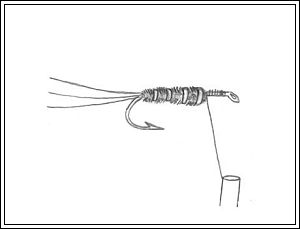
3) I fix a hackle of rooster
close to the abdomen.

4) On the stem of the hook, in
the half of the space between the end of the abdomen and the eye of the
hook, I fix the foam strip. The small strip is of square section wide as
the fly thorax.

5) I fix the strip on the hook
to half of his length. Because of the fixing, the strip becomes as a V.
In the same point, and with same criterion, I fix a piece of poly spun
jammed in the V of the strip.
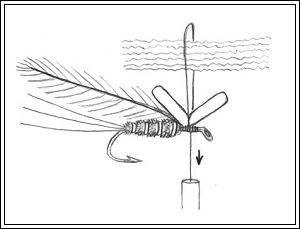
6) I create a dubbing to get the
fly thorax.
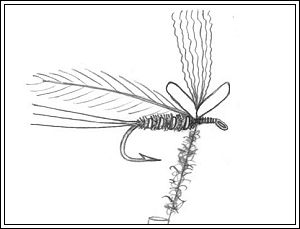
7) Afterwards, I wind the hackle
around the foam strip.
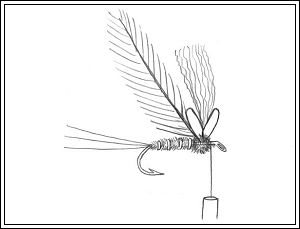
8) After I have wound the hackle
in the parachute position, I fix it close to the hook eye, I make the
dosing knot and I finish the fly cutting off the excesses of the hackle
and the strip.

The needed foam must be strong. If you
don’t find it in the fly shops, you could obtain it from a synthetic
sandal. This foam not only makes a solid base, but also it allows a
better horizontal distribution of the hackle barbs, so that none of
these could be in a wrong position, towards the top. It is not necessary
to use expensive hackles. Economical ones could be all right too, and
only a few hackle turns are enough to make the fly float, so that the
imitation has a transparent and light result. The foam strip is also
useful, and instead of the rooster hackle you can use the twisted
dubbing of hare hair. This hair makes a fly that skates very well on the
water surface, that’s why my imitations of sedge parachute are mainly
made with dubbing twister of hare hair.
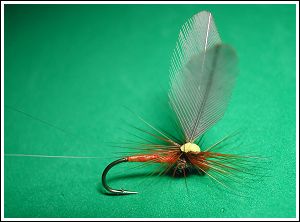
My parachute patterns, like all
parachutes, float touching the water surface. I don’t believe this
feature is a problem. I think that for a trout, it is better to catch
the flies while they are on the water, instead of over it, ready to fly
away. This is only my empirical opinion, according to the impression I
get, but fly fishing is not an exact science, and every fisherman can
enjoy it as he prefers.
Examples of different
flies tied with the same technique:



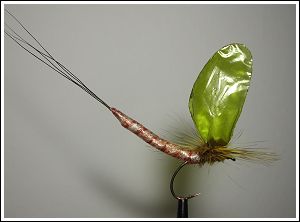


Text and photos by Agostino Roncallo © 2010 |